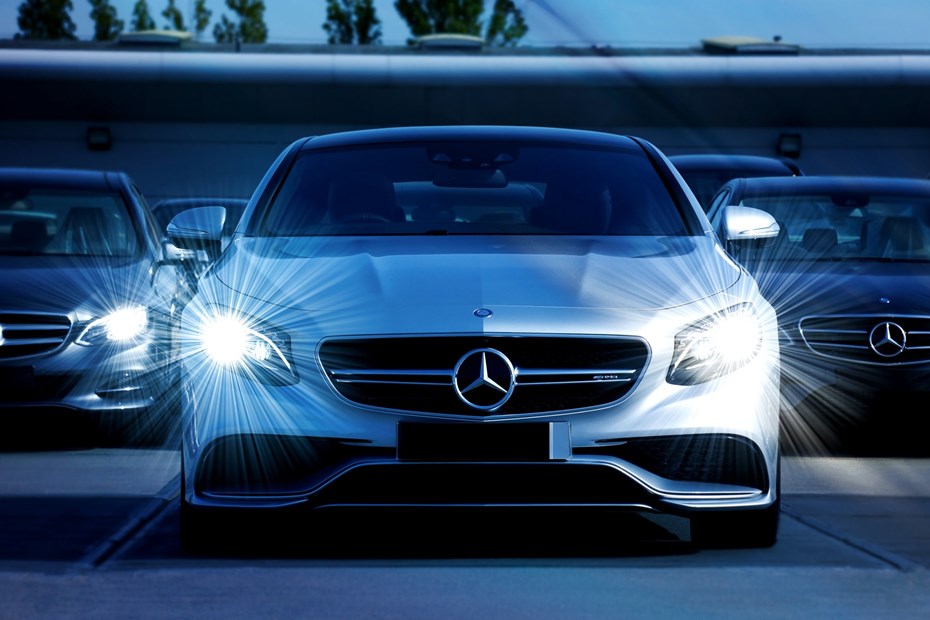LED headlights are car headlights that comprise many small light-emitting diodes (LEDs) to project a beam. By design, they consume only a minimal amount of power but collectively produce a brighter light than conventional halogen bulbs.
Though LED daytime running lights are now a legal requirement on all new vehicles, LED headlights are not yet industry standard. That being said, they’ve become very popular among manufacturers and consumers for their efficiency, brightness and clean style.
How do LED headlights work?
LED headlights use a collection of very sharp, bright and powerful LEDs to project a beam of light. But since LEDs are semiconductors that emit light when a current is passed through them, they require only a small amount of energy to illuminate.

LED headlights use considerably less power than conventional halogen lamps but glow brighter with better efficiency, too. They’re often paired with adaptive headlight technology to illuminate the road ahead without dazzling oncoming traffic.
Do I need them?
It would be a tricky case to make that motorists need LED headlights, though their virtues are clear. For countryside drivers who regularly take to dark lanes at night with very little in the way of street lighting, the extra power and brightness of LED lights could be very useful.
They would help to further illuminate the road ahead so that any hidden dangers can be spotted in better time. However, for those who exclusively drive around well-lit urban areas or seldom drive at night, the extra power provided by LED headlights would serve to do little else other than look stylish
Are there any drawbacks
Though prices have fallen, LED headlights are still generally more expensive than halogen headlights. Their production costs are much higher and so they can be a costly investment. They also produce considerably more heat than regular halogen bulbs, though modern vehicles are capable of managing the extra heat perfectly.
If you’re not sure which to get, check out our list of the best
LED headlights vs Xenon headlights
Xenon lamps share some characteristics with LED headlights, only they’re brighter. Xenon bulbs illuminate via an electrical current jumping from one electrode to another to form an arc of light. Xenon gas then amplifies the brightness, creating a coolly-coloured beam. Without a filament to break, they also have very long lifetimes.

However, such beams can be so bright that if not properly installed, they can blind or dazzle oncoming traffic. It is for this reason that retrofitting xenon bulbs into a standard halogen headlight is an illegal practice. Instead, entirely new, and regulated xenon headlamp units must be installed.
LED headlights, meanwhile, are more efficient than Xenon bulbs while also longer lasting.
Which cars can I find LED headlights on?
Once the preserve of premium cars such as the Lexus NX and Jaguar XF, LED headlights have now made their way down to more common cars. Today you can find them on most models, from the Audi A5 to the Ford Mondeo.
Looking for more jargon-busting motoring meanings? Head over to our Parkers Car Glossary page and take a look at our other definitions.
Just so you know, we may receive a commission or other compensation from the links on this website - read why you should trust us.








